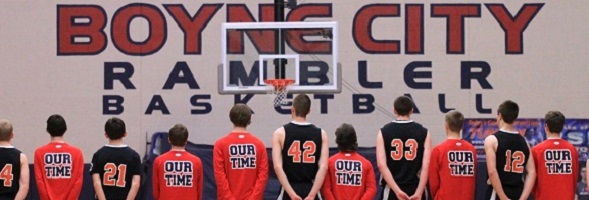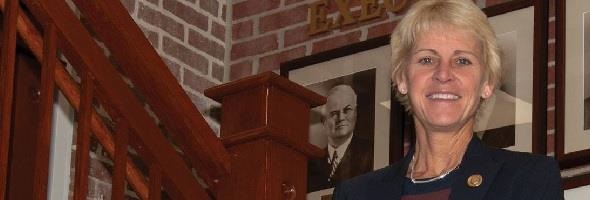
Graduation of Multi-Sport Athletes
December 8, 2014
By David Smith
Boyne City athletic director
Editor’s Note: This is reprinted with permission from the Petoskey News-Review, which is publishing semi-regular columns written by athletic directors for the northwest region of the Lower Peninsula. Click for more sports coverage from the News-Review.
There are many important topics today that relate to high school sports. I was honored when asked to write a brief column about a current topic of my choice in the high sports world. This particular topic, student-athletes specializing in one sport, is something that is happening more and more.
It’s hard to pinpoint exactly why this is, but it often times seems to boil down to unrealistic expectations from several parties that an athlete is capable of being a legitimate college or higher-level athlete.
Don’t get me wrong, we have a plethora of outstanding athletes in Northern Michigan. The facts are, however, that about 98 out of 100 high school athletes never play collegiate sports of any kind at any level. Also, less than one percent of high school athletes receive a scholarship of any kind to a Division I school.
I don’t want to tell someone not to have that dream. In fact, I think that is an awesome dream to have. I had that goal growing up and was fortunate to be able to play a few different sports at a small Division III college. It helped me grow immensely as a person, and I’m very thankful for that experience. I just can’t emphasize enough how we need to all have realistic expectations for our student athletes, whether it’s the athletes themselves, or parents, coaches, administrators, etc.
I think one thing we can all do to help this is to emphasize the process more than the outcome. The funny thing is getting the process right and enjoying it almost always leads to positive outcomes. The process is where all the hard work is put in. The process is where good character is developed, and that’s one of the most important traits we can help young individuals develop.
Many high school athletes are also too busy and compete too much. The amount of young athletes competing year-round for sports is getting out of control. Sure, sometimes it works out and an athlete will really improve by doing this, but more often than not, they get burned out and when it’s actually that sport in-season, they are toast and go through the motions. I know from a coaching standpoint I want athletes hungry to compete every time out.
Being that busy also means very little time for athletes to improve their overall athleticism (stronger, faster, quicker, more explosive, better endurance, etc.). Skills take a back seat too because most athletes are just playing games and not focusing on skill work. I’d rather take an athlete who trains to become more athletic and works on skills for several months than one who plays AAU or something of that nature. I know that has its place for a very few individuals, but most young athletes need way more work on their athleticism and skills before being ready for something like AAU.
I get specializing in one sport if you are undoubtedly a Division I athlete that will likely play professionally. Or maybe it’s someone who goes to a big high school and they aren’t very talented so the only way they can play is to focus really hard on one sport. I get those occurrences.
I would argue, however, that even the Division I-type individuals will nine times out of 10 benefit more from playing another sport because they aren’t going to work hard enough by themselves to make the gains. They would then also be refreshed and ready to get after it once the season arrives. With that, our schools up here will always have a hard time competing at the regional and state level if we don’t have all of our best athletes playing two or three sports. It blows me away how good some of our teams in the area could fare if this happened.
This column is not meant to be negative. It’s just some food for thought. I haven’t been at this very long, but it’s something I’ve seen happen more and more in the last 10 years. I’ve just always been a big fan of the multiple sport athlete and experienced first-hand how much a school can benefit when a group of talented athletes go through and they all play a minimum of two sports.
At the end of the day, we cannot forget what I’d consider the main purpose of athletics at this level. That is, to help young individuals leave our schools with experiences and life lessons that will help them as they pursue careers and go on with other facets of their lives.

NFHS Voice: We Must Act on Vaping
September 13, 2019
By Karissa Niehoff
NFHS Executive Director
The issue of vaping has reached a crisis stage across the United States, and leaders in our nation’s schools must take immediate steps to stop the use of these electronic cigarette products by our nation’s youth – particularly the more than 12 million participants in high school athletics and performing arts programs.
On Tuesday, CBS News reported that Kansas health officials confirmed the first death in that state linked to vaping. The CBS News release stated that last week, officials in Indiana, California and Minnesota reported deaths in their states linked to vaping. Previous deaths had been reported in Illinois and Oregon.
Also this week, The Associated Press reported that public health officials confirmed two people in Idaho had developed a serious lung disease linked to vaping. The outbreak of vaping-related lung disease has sickened about 450 people in at least 33 states, according to the Centers for Disease Control and Prevention (CDC), causing the CDC to urge people to consider stopping vaping as the number of cases of severe lung illnesses continues to rise.
In February 2019, the CDC reported a 78-percent increase in high school students vaping from 2017 to 2018. Youth e-cigarette use has been called an epidemic by major public health officials.
Students in our nation’s schools have been sold a false bill of goods that vaping is a safe alternative to cigarette smoking – particularly by industry giant JUUL, which held a 76-percent share of the e-cigarette market at the end of 2018 and has wooed the youth market with its products that contain flavors such as cotton candy, chocolate, gummy bear, strawberry and many others.
While the U.S. Food and Drug Administration (FDA) is giving e-cigarette companies until sometime next year to demonstrate that their products can help people stop smoking cigarettes, leaders in our nation’s school activities programs must do everything possible to stop the use of these products by our nation’s youth now – not in 2020.
One educational tool that schools can use immediately is the online course “Understanding Vaping and E-Cigarettes” created by the NFHS with support from the Office of the U.S. Surgeon General. The free course is available on the NFHS Learning Center at www.NFHSLearn.com.
Several articles related to vaping will appear in the September issue of High School Today, which will be posted on the NFHS website.
Dr. Karissa L. Niehoff is beginning her second year as executive director of the National Federation of State High School Associations (NFHS) in Indianapolis, Indiana. She is the first female to head the national leadership organization for high school athletics and performing arts activities and the sixth full-time executive director of the NFHS, which celebrated its 100th year of service during the 2018-19 school year. She previously was executive director of the Connecticut Association of Schools-Connecticut Interscholastic Athletic Conference for seven years.

